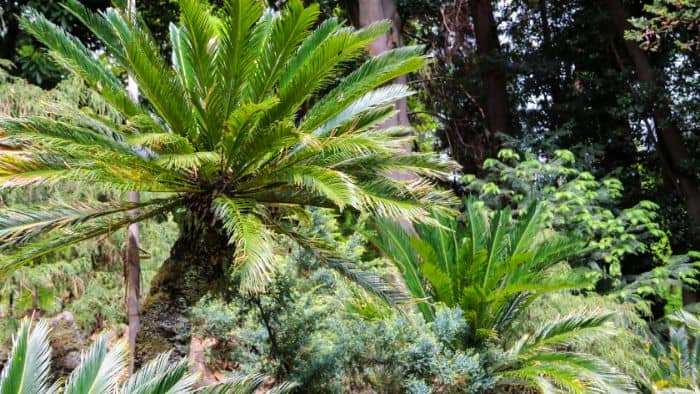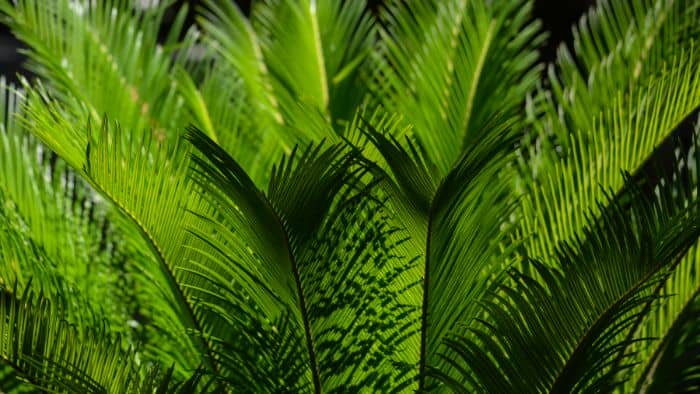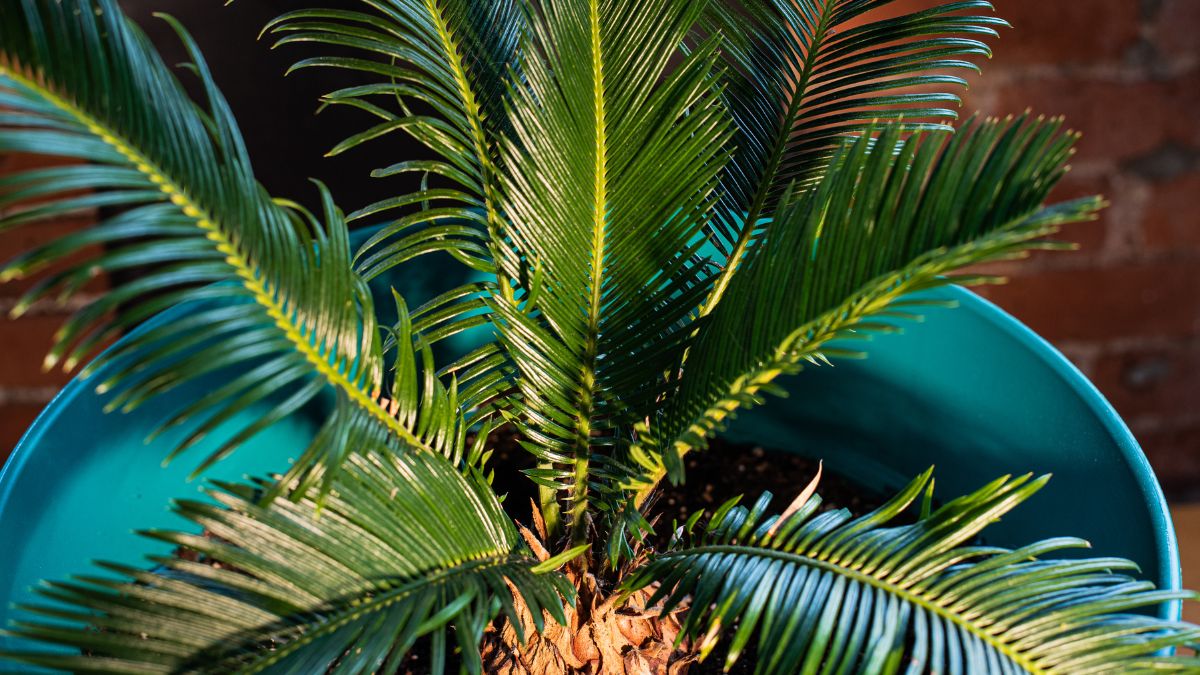Last Updated on November 16, 2022
It is essential to have knowledge of the Best Soil for Sago Palms as this will ensure that your plant gets the nutrients and other compounds it needs to thrive. A loose, porous growing medium is recommended as it works best for these stunning plants. Although they don’t have too many soil requirements, ensuring that the environment they’re planted has excellent drainage properties is vital.
Therefore, it is best to have soil that is moderately rich in organic matter and has a suitable pH range. If you’re growing them as container plants, then there are a few things to take into consideration to keep your sago palm at an optimal level. Also, keep in mind that when grown outside, these palms require some shade to protect their leaves from burning.
Despite the fact that they are tropical plants that can tolerate full sun, extended periods of direct light should be avoided. However, this would also depend on the climate in your region. To learn more about moderately amending the soil for moisture retention, avoiding excessive saturation, and allowing for effective nutrient uptake, browse through the information below.
Best Soil For Sago Palms
Sago palms are Cycads which are relatives of conifers. Their stiff fronds and thick trunks give them the appearance of palm trees, hence their name. The genus contains roughly 40 species, although the slow-growing king sago palm, is the most well-known. Container-grown plants make excellent houseplants and when fully mature, they can reach heights of up to 10 feet.
However, this would also depend on the environment they’re planted in and the maintenance and care they’re afforded. For this reason, we recommend using the best soil for sago palms as it will ensure that they thrive. Keep in mind that these plants grow best in USDA Zones 8 to 10 as it has the correct climate for them to flourish. Listed below are soil recommendations that best suit these glorious evergreens.

Soil Tips:
1. Although sago palms don’t have too many soil requirements, there are a few specific amendments that will aid them to grow well.
2. To begin with, ensure that you use soil that has excellent drainage.
3. Therefore, it is best to have sandy soil that is moderately rich in organic matter.
4. The growing medium should also have a pH range of slightly acidic to neutral.
5. A potting mixture designed for palms or cacti should work well for container-grown sago plants.
6. For effective results that include all of the above properties, you should mix together equal parts of peat moss, pine bark, compost, gritty sand, and perlite. This offers a productive mixture that is rich in organic materials and drains efficiently.
7. Also, the plant can drink without the roots getting too wet because the peat will hold part of the water.
How to Plant a Sago Palm
Sago palms are a slow-growing plant. Because of this, most gardeners don’t prefer to start them from seed. Instead, they separate the individual pups that form at the base of the plants and pot them up. When doing so, it is best to use a sharp knife to peel the pup and cut through the roots.
Keep in mind that these plants can induce allergic reactions in some people who use their bare hands when handling them. Therefore, make sure to protect your hands by using gloves. Also, when planting, use the best soil for sago palms to keep your plant healthy.

Have a look at the planting tips below:
– Firstly, cut off all but two of the pup’s leaves, and remove any roots.
– For the next few days, keep the puppy in a cool, dry area away from the light. This will allow the cut end to heal and develop a callus.
– Then, put the pup, cut end down, in a container that is not much larger than the pup itself.
– You should now dust the cut end with rooting hormone to promote the formation of new roots.
– To plant them, you can opt to use the best soil mix recommendations above or potting soil, cactus, or succulent soil blend.
– Remember to keep the soil slightly moist and place the pot in a warm, bright location away from direct sunshine.
– The emergence of leaf buds and surface roots will occur in a few weeks.
Note: Sago palm fertilization is important to enhance your plant’s growth potential. This is because these plants usually grow very slowly. Therefore, it is best to give them a balanced, slow-release fertilizer during the spring season.
Potting Soil For Sago Palm
Refreshing the potting soil in your plant’s container every spring is a smart idea to keep them healthy. The fronds start to arch over once they reach a length of around a foot if they are afforded the proper care. We have discussed the best soil for sago palms above, but what about an ideal DIY potting mix?
Well, we have got a great suggestion for you, as we have also had much success with it when growing our palms. A productive soil mix that works best for your potted plant should include two parts sand, one part peat moss, one part pine bark, and one part perlite or vermiculite. This offers a mixture that is rich in organic materials and drains efficiently.
The plant can drink without the roots getting too wet because the peat will hold part of the water. However, when the soil starts to dry out, your potted sago palms need to be watered. Once established, these plants are drought-tolerant and don’t require frequent watering. But, ensure that they are not left unattended for extended periods of time. Click on the video for tips on potting sago palms.
How to Care for Sago Palm
It is essential to have the correct information when caring for any plant. Sago palms are no different as although they are not very demanding, there are a few things that you should consider before planting them in your garden or home.
Factors that include the climate and atmosphere in your region are also important aspects to take heed of. Have a look below to learn all about caring for these eye-catching conifers.
Sago palm care tips:
When growing these plants, taking caution is a must. This is especially true If you have children or pets because they are toxic.
When handling or pruning them, wear gloves to prevent contact with your skin.
These plants prefer a humid atmosphere, warm temperatures, and bright indirect light. Keep indoor plants away from heating or cooling vents and out of heavy drafts.
To assist raise the ambient humidity, mist them frequently, use a humidifier, or group them with other houseplants.
You can also put a bonsai sago palm on a tray with pebbles and some water to increase the humidity around it.
These palms should be planted in potting soil that drains well and has some organic content.
In the spring and summer, make sure the soil is continually moist.
Using a slow-release fertilizer is best for your plant’s micronutrient uptake.
On sago palms, white scale are a prevalent issue. In this case, you should remove any badly infested fronds from your plant.

Conclusion
Besides using the best soil for sago palms, you should also be aware that cycads, palms, and other acid-loving plants utilize magnesium in large amounts. For this reason, amending the soil with an Epsom salt solution is ideal for them. This should be done once every two to three months for effective results.
Also remember that when caring for these palms, excessive moisture can cause root rot which can be seen in their yellowing leaves. To encourage good growth, keep your containers adequately emptied of extra water by ensuring that they have sufficient drainage holes. If the weather in your region is consistently warm, it is advisable to move your sago outside.
However, they should be brought back inside before the fall or winter temperatures fall below 55 degrees Fahrenheit. Although illnesses rarely affect these old plants, crown rot or root rot can happen with negligence. Affording them the best care and maintenance is vital in maintaining their beautiful stance. Click on the link for a bit of history and other aspects of sago palms.

